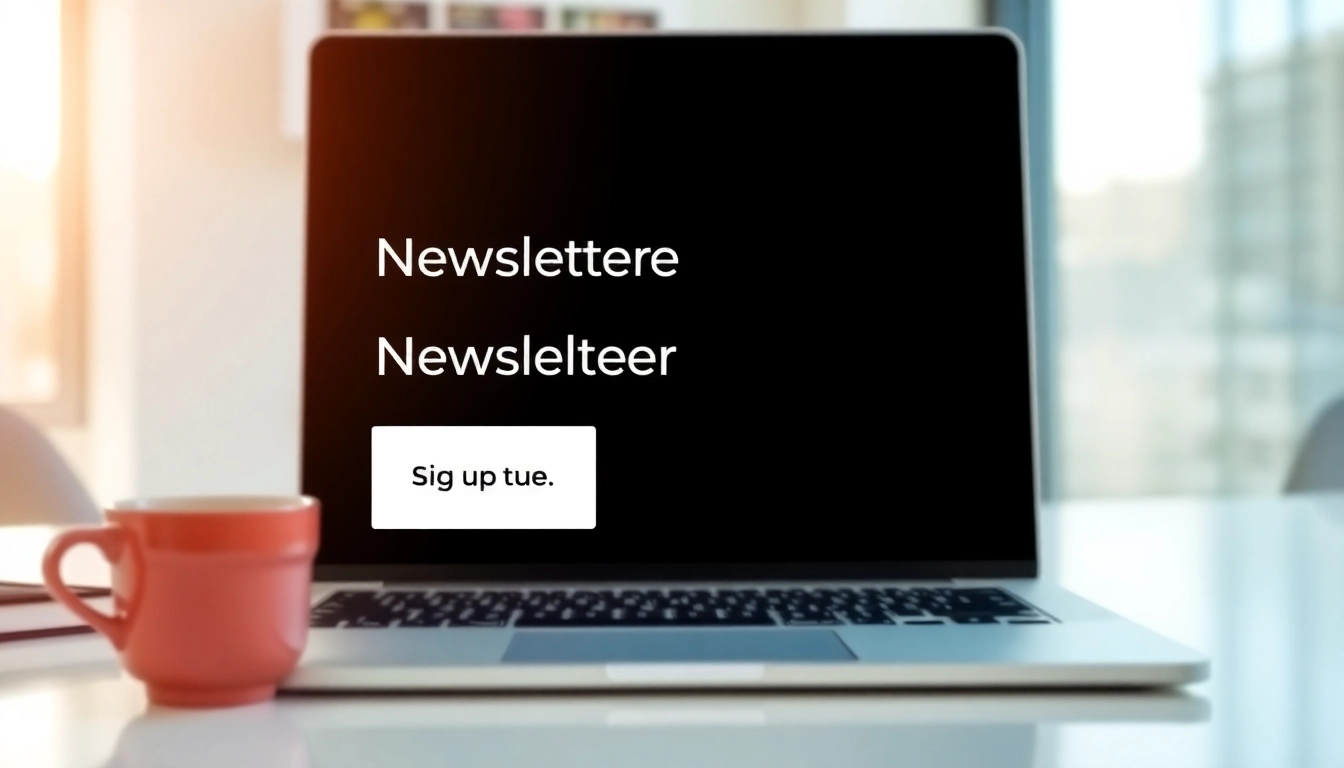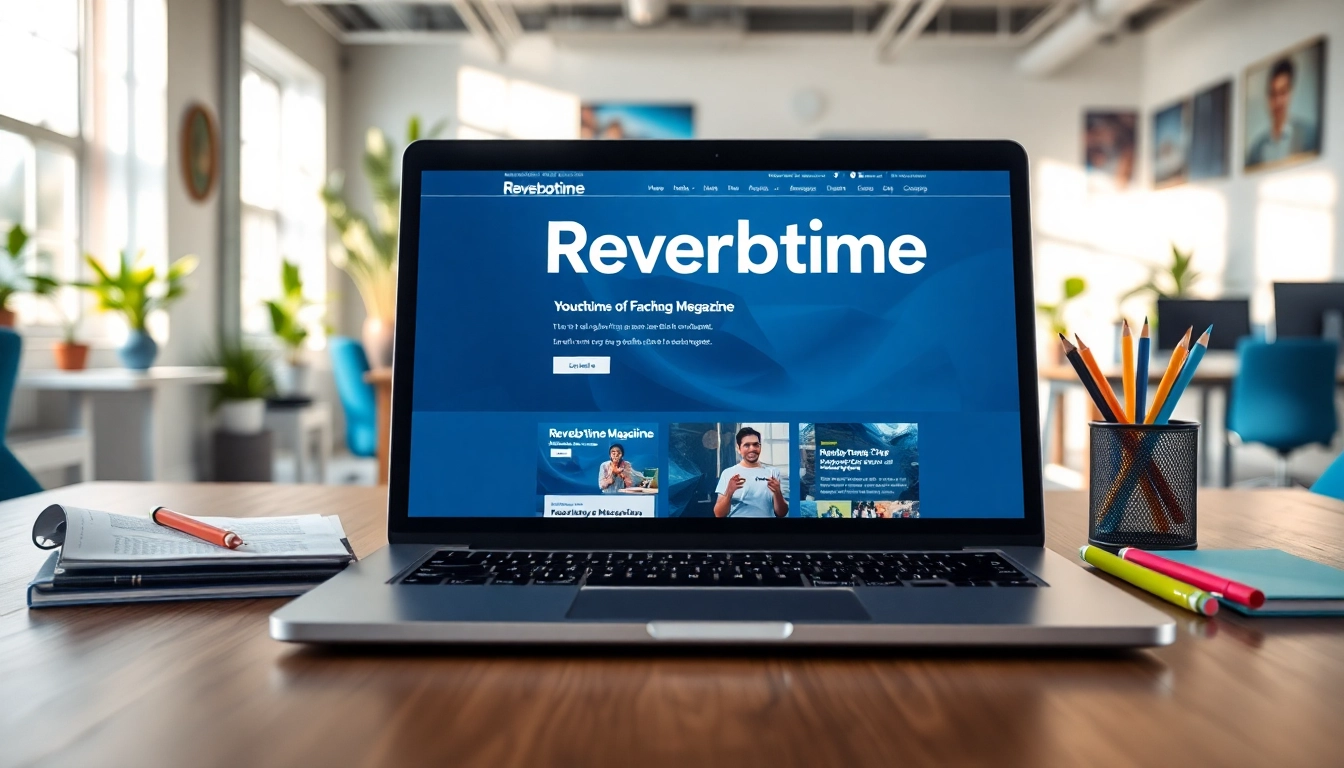Understanding the Importance of Newsletter Signup
In today’s digital landscape, the significance of capturing potential customers’ interest through a newsletter signup cannot be overstated. It acts as a direct line of communication, offering businesses a way to connect with customers regularly. Without a streamlined newsletter strategy, brands risk losing touch with their audience, which can result in decreased engagement and profitability.
Why Users Should Sign Up
For users, signing up for a newsletter often represents an avenue for gaining insights, expert advice, or exclusive content. This reciprocal relationship between the user and the business is valuable. Subscribers expect to receive tailored information that aligns with their interests and needs, enhancing their experience and satisfaction with the brand. They may benefit from early product announcements, educational articles, industry trends, and personalized recommendations, all accessible right in their inboxes.
Benefits of Regular Newsletters
Regular newsletters keep users informed and engaged. For brands, regular communication cultivates a sense of trust and reliability. Frequent updates ensure that the audience remains in the loop about developments and promotions. Moreover, newsletters allow businesses to highlight their value proposition continually. When users receive high-quality content consistently, it can lead to increased brand loyalty, stimulating word-of-mouth referrals and repeat purchases.
Impact on Business Growth
A robust newsletter strategy can significantly contribute to business growth. It builds a database of potential leads, which is an asset for future marketing efforts. By converting newsletter subscribers into paying customers, businesses can realize substantial revenue increases. Moreover, successful newsletters assist brands in establishing themselves as thought leaders within their industries, further driving traffic and user engagement. The data captured through newsletter signups provides valuable insights into audience preferences, enabling customization of marketing efforts for higher effectiveness.
Best Practices for Designing Your Newsletter Signup
Simple Form Structures
The design of the newsletter signup form is crucial for optimal user experience. Simple, uncluttered forms that require just the essential information—like the user’s name and email address—tend to yield higher completion rates. Lengthy forms can deter signups, as users may perceive them as time-consuming. A clean layout with visible labels will assist users in navigating the signup process more efficiently. Additionally, utilizing responsive design techniques will ensure that forms are accessible on both desktop and mobile devices.
Effective Call-to-Actions
The call-to-action (CTA) is a pivotal element of the signup form. It should be clear, concise, and compelling, encouraging users to take immediate action. Phrases like “Join us for exclusive updates” or “Get the latest tips directly to your inbox” not only specify the benefits of signing up but also cultivate a sense of urgency. A/B testing different phrasing or button colors can illuminate which CTAs resonate best with your audience, optimizing signup rates.
Placement and Timing Considerations
Where and when the newsletter signup occurs can profoundly impact its effectiveness. Strategically placing signup forms in areas where users are likely to engage, such as at the end of blog posts or as a pop-up after a user has engaged with content, can capture interest at peak moments. Furthermore, timing is critical; targeting users soon after they’ve engaged with your website, rather than bombarding them immediately upon arrival, can foster better sign-up rates. Frequency of reminders is also essential — enough to stay in users’ minds without becoming intrusive.
Incentives to Encourage Newsletter Signup
Exclusive Content Offers
Providing exclusive content to subscribers can dramatically increase signup rates. This could be in the form of eBooks, whitepapers, webinars, or industry reports that cannot be accessed elsewhere. By framing your newsletter as a gateway to privileged information, users will find value in subscribing. Consider implementing a signup campaign that highlights the unique benefits they will receive, reinforcing the importance of their subscription.
Discounts and Promotions
Enticing potential subscribers with discounts or special promotions is another effective strategy. For example, first-time subscribers might receive a percentage discount on their next purchase. This not only motivates signups, but it can also encourage immediate sales. Beyond monetary incentives, exclusive access to promotions, pre-launch product opportunities, or ticket sales are effective methods to further entice users.
Gamification Techniques
Incorporating gamification into the signup process can also enhance engagement. Implementing a point system or reward mechanism where users earn points for signing up or engaging with content can effectively boost participation. Additionally, creating competition among peers through referral programs incentivizes users not only to sign up but to get others involved as well, expanding your mailing list further.
Testing and Optimizing Your Signup Process
Analyzing User Behavior
Understanding how users interact with your newsletter signup forms is essential for optimization. Using analytics tools to monitor where users drop off in the signup process can highlight areas for improvement. Identifying patterns in behavior helps in making informed changes to designs, copy, and placement, ultimately leading to a better user experience that increases subscriptions.
A/B Testing for Maximum Effectiveness
A/B testing is a critical component of optimizing the signup process. By testing variations in form design, placement, copy, and CTAs, marketers can derive data-backed insights into what drives higher conversion rates. For instance, changing the color of the signup button or varying the wording of the CTA can reveal significant differences in engagement. Continual testing will allow businesses to refine and perfect their strategy over time.
Gathering Feedback from Subscribers
Feedback from subscribers can provide invaluable insights into the signup experience. Surveys or direct outreach to recent signups can uncover pain points and suggestions for improvement. Engaging with subscribers demonstrates that a brand values customer input and is willing to adapt for a better experience. Continuous improvement based on subscriber feedback ensures that the newsletter remains relevant and appealing.
Measuring the Success of Your Newsletter Signup
Key Performance Indicators (KPIs)
To gauge the effectiveness of your newsletter signup process, it’s essential to establish relevant KPIs. These might include conversion rates, bounce rates, and overall growth in the subscriber list. Analyzing these data points will provide a clearer picture of what strategies are working and where improvements can be made. Regularly reviewing performance metrics will help guide future content decisions and promotional strategies effectively.
Subscriber Engagement Metrics
Beyond initial sign-up, measuring subscriber engagement is equally important. Analyzing open rates, click-through rates, and unsubscribe rates will reveal how effectively your newsletters resonate with your audience. Identifying trends in these metrics can help pinpoint successful content strategies while also indicating what areas may require refining. Data on engagement helps tailor future newsletters more closely to subscriber interests, enhancing loyalty.
Improving Subscriber Retention Rates
Maintaining subscribers is just as critical as acquiring them. Developing a strategy that focuses on retaining subscribers can involve regular content analysis, providing valuable information, and ensuring the delivery of consistent quality. Initiating re-engagement campaigns for inactive subscribers and soliciting feedback can help determine why users disengage. Implementing strategies to revitalize these connections can significantly enhance retention rates and overall success.



